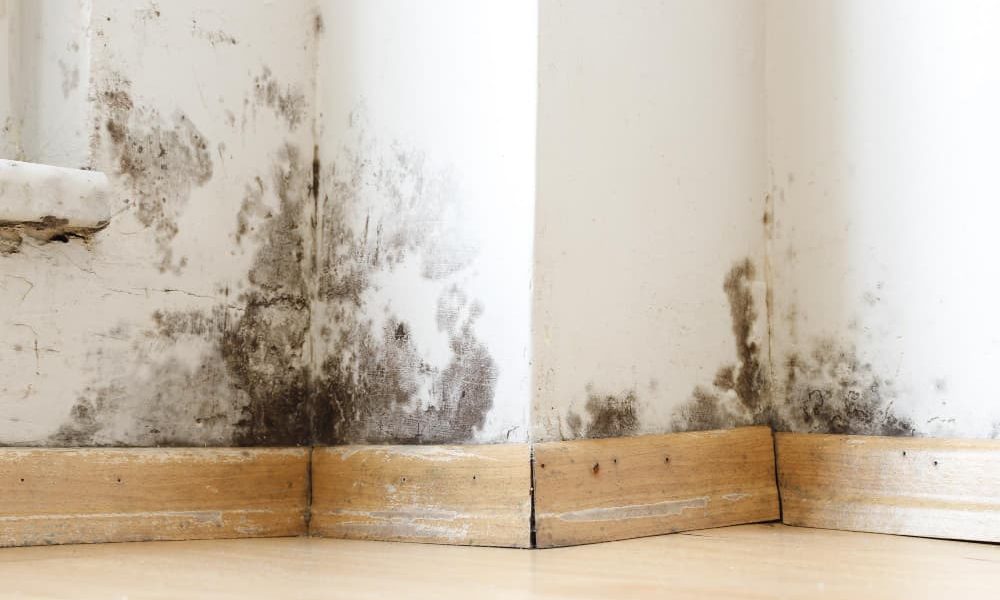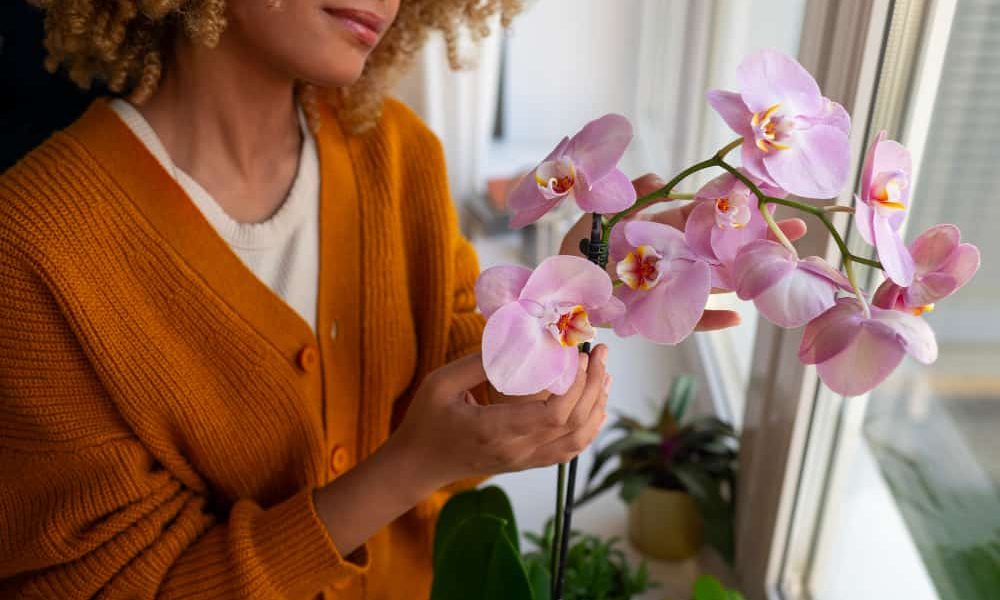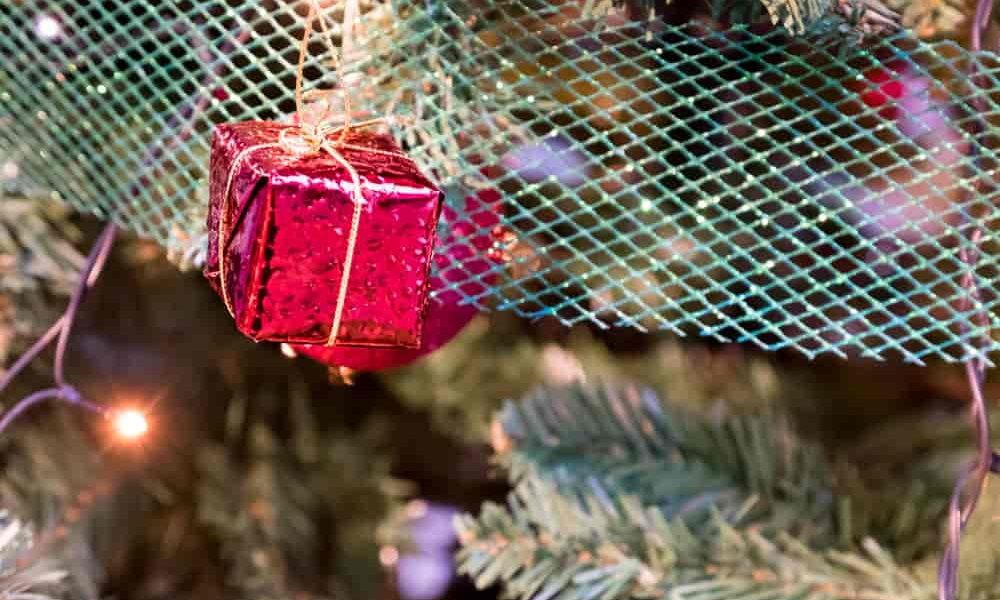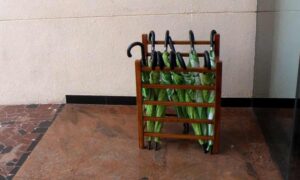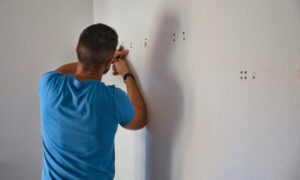In today’s world, sustainability is more than just a trend—it’s a necessity. As we strive to reduce our environmental footprint, many of us are looking for simple ways to make our homes greener and more eco-conscious. One fantastic way to do this is by reusing materials we often throw away, like plastic and glass bottles, to create functional, beautiful indoor planters.
Indoor gardening has gained popularity in recent years, not only for its aesthetic appeal but also for the benefits it brings, such as improving air quality and promoting well-being. But what if you could elevate this hobby by using recycled materials? Enter DIY recycled bottle planters, a perfect blend of creativity, sustainability, and practicality.
Whether you’re new to gardening or an experienced plant parent, recycled bottle planters offer an affordable, accessible, and environmentally friendly way to bring nature into your home. In this guide, we’ll explore everything you need to know about turning your empty bottles into stunning planters, the best plants to grow in them, and how to care for your mini indoor garden. Let’s dive in and discover how to make the most of what you have—both in terms of space and materials—while contributing to a greener planet.
1. DIY Recycled Bottle Planters for Indoor Gardening: A Sustainable Way to Green Your Home
In today’s world, finding ways to reduce waste and live sustainably is more important than ever. One of the simplest yet impactful ways you can contribute to the environment is by reusing everyday materials, like plastic or glass bottles, for your gardening needs. Indoor gardening, especially, offers a perfect opportunity to combine sustainability with creativity. In this blog post, we’ll explore how you can transform used bottles into beautiful, functional planters that bring life into your home.
1. Why Choose Recycled Bottles for Indoor Planters?
When it comes to indoor gardening, choosing the right containers is essential for the health of your plants and the aesthetics of your space. While traditional pots work well, using recycled bottles offers several unique advantages, making them a popular option among DIY enthusiasts and eco-conscious individuals alike.
Environmental Benefits of Using Recycled Materials in Gardening
One of the most significant benefits of using recycled bottles for planters is the positive environmental impact. Every year, millions of plastic bottles end up in landfills, where they can take hundreds of years to decompose. By reusing these bottles for indoor gardening, you’re not only diverting waste from landfills but also reducing the demand for new plastic products. Similarly, glass bottles can be repurposed in creative ways, preventing them from becoming part of the waste stream.
Additionally, using recycled bottles helps you reduce your carbon footprint. The production of new gardening pots, especially those made from plastic, involves considerable energy consumption and resources. By upcycling bottles you already have at home, you’re cutting down on the energy and raw materials required to manufacture new items. This small change can collectively lead to a big impact on the environment.
Cost-Effective and Accessible Solution
Another reason why recycled bottles make excellent planters is the cost. Indoor gardening can become expensive, especially if you invest in designer pots or specialty containers. Using old bottles you already have lying around is a cost-effective way to start or expand your indoor garden without breaking the bank.
Everyone has access to empty bottles, whether they’re leftover soda bottles, water containers, or wine bottles. With a little creativity and effort, these discarded items can become stylish and practical additions to your indoor gardening setup. You’re essentially transforming waste into something valuable and functional, which is always a win-win.
Unique and Customizable Design
When it comes to home décor, everyone appreciates a touch of uniqueness and personality. Using recycled bottles as planters allows you to create something truly one-of-a-kind. You can customize each planter by painting the bottles, adding decorative elements, or even cutting them into unique shapes. This flexibility ensures that your indoor garden reflects your personal style and creativity.
Additionally, bottle planters can be adapted to fit various spaces. Whether you’re looking for a small container to fit on a windowsill or something larger to make a statement in your living room, you can easily modify bottles to suit your needs.
2. How to Make DIY Recycled Bottle Planters for Indoor Gardening
Ready to get started? Creating DIY recycled bottle planters is easier than you might think. With a few tools and some creativity, you can make functional and attractive planters for your indoor plants.
Step-by-Step Guide to Making a Bottle Planter for Indoor Plants
Here’s a simple guide to transforming an empty bottle into a beautiful planter:
Materials You’ll Need:
- An empty plastic or glass bottle (any size)
- A craft knife or scissors (for plastic bottles)
- Sandpaper (optional, for smoothing edges)
- Paint or markers (for decorating)
- Soil
- Your choice of plant or seeds
Step 1: Choose Your Bottle First, select a bottle that works best for the plant you want to grow. For larger plants or herbs, you might need a bigger bottle, like a 2-liter soda bottle. If you’re planting succulents or small indoor plants, a smaller bottle will suffice. Glass bottles work well for a sleek, minimalist look, while plastic bottles are easier to cut and modify.
Step 2: Prepare the Bottle For plastic bottles, use a craft knife or scissors to cut the bottle in half or cut a small opening on the side, depending on your design. If you’re using the bottom half of the bottle as a planter, make sure the top part (neck) is wide enough for the plant to grow comfortably. Smooth the edges with sandpaper to avoid any sharp areas.
For glass bottles, you’ll need a glass cutter to carefully slice through the bottle. If you don’t have experience with this, there are online tutorials and kits available that can help you safely cut glass bottles. Alternatively, you can leave the bottle whole and simply insert small plants, like air plants, into the top.
Step 3: Add Drainage Proper drainage is essential for healthy plants. If your bottle doesn’t have any drainage holes, add a layer of small rocks or pebbles at the bottom to help excess water drain away from the soil. This prevents your plants from sitting in water, which can lead to root rot.
Step 4: Fill with Soil and Plant Once your planter is ready, fill it with a suitable potting mix for your chosen plant. Make sure to leave enough room for the plant’s roots. Gently place your plant or seeds into the soil, ensuring they are securely positioned.
Step 5: Decorate (Optional) Now comes the fun part! If you want to add a personal touch, decorate the outside of your bottle planter. You can paint it, use permanent markers to draw designs, or wrap it in fabric or twine for a rustic look. The possibilities are endless and can be tailored to match your home décor.
Step 6: Water and Care Finally, water your new planter as needed based on the type of plant you’ve chosen. Place your bottle planter in a location with the right amount of sunlight for your plant, whether that’s near a window or on a sunny shelf.
Choosing the Right Bottles for DIY Planters: Plastic vs. Glass
Choosing between plastic and glass bottles depends on your preferences and the type of plant you’re growing. Plastic bottles are lightweight, easy to cut, and can be shaped into different styles. They’re also a bit more forgiving if you make mistakes while cutting or modifying them. On the downside, they may not last as long as glass planters and might degrade over time if exposed to sunlight.
Glass bottles, on the other hand, provide a more polished look and are better for long-term use. However, cutting glass bottles requires more effort and safety precautions. If you’re not comfortable cutting glass, you can always use the bottle whole and get creative with small plants like succulents.
By following these simple steps and selecting the right type of bottle, you can start your indoor gardening journey in an eco-friendly and visually appealing way. Plus, with the added satisfaction of repurposing waste materials, your DIY bottle planters are sure to be a talking point for visitors!
3. Best Plants for Recycled Bottle Planters Indoors
Now that you’ve created your DIY recycled bottle planters, it’s time to choose the right plants for them. Not all plants thrive in the limited space that a bottle provides, so it’s important to select varieties that can adapt to the unique conditions of your upcycled containers. Here are some of the best plants to grow in recycled bottle planters indoors.
Low Maintenance Indoor Plants for Bottle Planters
When selecting plants for your recycled bottle planters, consider low-maintenance varieties that can thrive with minimal care. These are perfect for beginners or anyone who prefers a hassle-free gardening experience.
Spider Plants
Spider plants are incredibly resilient and adaptable, making them a popular choice for indoor gardening. They thrive in low to moderate light and only need to be watered once the soil has dried out. Their slender, arching leaves make them an attractive addition to any bottle planter, and they can even produce “baby” spider plants that you can propagate in more bottles.
Pothos (Devil’s Ivy)
Pothos is another hardy plant that is perfect for bottle planters. It can tolerate low light and inconsistent watering, making it one of the most forgiving houseplants. The vine-like growth of pothos looks stunning as it trails over the sides of your recycled bottle planter, adding a lush, green touch to your indoor space.
Snake Plant (Sansevieria)
If you’re looking for a plant that’s nearly impossible to kill, snake plants are a fantastic option. They thrive in low light and require minimal watering. Snake plants have striking, upright leaves that can grow tall, even in small planters. They’re also excellent air purifiers, making them a great addition to your recycled bottle garden.
Top 5 Herbs to Grow in Recycled Bottle Planters
One of the best uses for recycled bottle planters is growing fresh herbs indoors. Herbs don’t need a lot of space, and having them within reach means you can enjoy fresh, homegrown flavors in your cooking. Here are five herbs that thrive in bottle planters:
- Basil – Basil grows well in sunny spots and needs consistent watering, making it ideal for windowsill bottle planters. Its fragrant leaves are perfect for cooking, and with proper care, basil can thrive indoors year-round.
- Mint – Mint is a robust herb that can grow in various conditions. However, it spreads quickly, so keeping it in a bottle planter helps contain its growth while providing fresh mint for teas, salads, or cocktails.
- Cilantro (Coriander) – Cilantro requires moderate sunlight and regular watering. A bottle planter with good drainage is perfect for growing this herb indoors, providing you with fresh cilantro for salsas and garnishes.
- Thyme – Thyme is a drought-tolerant herb that prefers well-drained soil, making it ideal for smaller recycled planters. Its compact size and flavorful leaves make it a must-have for your indoor herb garden.
- Parsley – Parsley grows well in both sunlight and shade, making it a versatile choice for indoor gardening. It needs regular watering but can thrive in recycled bottle planters, offering fresh garnish for various dishes.
Best Succulents and Cacti for Recycled Bottle Gardening
If you prefer low-water, drought-resistant plants, succulents and cacti are ideal choices for your recycled bottle planters. They come in various shapes, colors, and sizes, adding a modern and minimalist look to your indoor garden.
Aloe Vera
Aloe vera is not only an attractive succulent but also useful for its medicinal properties. Its thick, spiky leaves grow well in a well-drained bottle planter. Aloe vera requires minimal water and does well in indirect sunlight.
Echeveria
Echeveria succulents form rosettes of fleshy, colorful leaves that can look stunning in bottle planters. These plants prefer bright, indirect sunlight and need to be watered sparingly, making them easy to care for.
Haworthia
Haworthia is a small succulent with spiky, striped leaves that can thrive in a recycled bottle planter. It requires little sunlight and water, making it an excellent choice for a low-maintenance indoor garden.
4. Creative Designs for DIY Recycled Bottle Planters
The beauty of recycled bottle planters lies in their customizability. Whether you want a simple, minimalist look or a colorful, decorative piece, the design possibilities are endless. Here are some creative ideas to make your DIY bottle planters stand out.
Unique Bottle Planter Ideas for Indoor Decoration
Hanging Planters
Turn your recycled bottles into stylish hanging planters. Cut the bottle horizontally, fill it with soil and plants, and hang it using twine or wire. Hanging bottle planters work well for trailing plants like pothos or ivy and can add greenery to walls or ceilings, saving space on shelves or tables.
Self-Watering Planters
If you’re concerned about over- or under-watering your plants, create a self-watering planter using a plastic bottle. Cut the bottle in half, fill the top half with soil and your plant, and place it upside-down into the bottom half, which will act as a reservoir. The plant will absorb water through a wick (such as a piece of string) as needed, making it a low-maintenance option for busy gardeners.
Painted and Decorated Planters
Give your bottle planters a personal touch by painting them. You can use acrylic paint, spray paint, or even chalk paint to match your home décor. Add patterns, designs, or inspirational quotes to make your planters truly unique. If painting isn’t your style, consider wrapping the bottles in twine, fabric, or ribbon for a rustic or chic look.
How to Paint and Decorate Your Recycled Bottle Planters
To get started with decorating your bottle planters, gather a few simple materials:
- Acrylic paint (for plastic bottles)
- Glass paint or markers (for glass bottles)
- Brushes or sponges
- Tape for creating patterns
- Twine or fabric for wrapping
First, clean the bottle thoroughly and remove any labels. Apply a base coat of paint and let it dry before adding details like stripes, dots, or other designs. Use painter’s tape to create clean lines if you want a more geometric pattern. Once the paint is dry, you can seal it with a clear, water-resistant spray to protect the design.
For a more natural look, try wrapping twine or rope around the bottle. Secure it with glue at the ends and leave the middle section bare to display your plant.
Vertical Gardening with Recycled Bottle Planters
For those who are tight on space, vertical gardening with recycled bottle planters is an excellent solution. Create a vertical garden by attaching multiple bottle planters to a wooden frame, fence, or wall. You can either hang the bottles using hooks or stack them horizontally by cutting openings in the sides.
Vertical bottle gardens are perfect for herbs, small vegetables, or flowers. They make efficient use of space and can transform a plain wall into a living piece of art. Plus, vertical gardening keeps plants off the ground, reducing the risk of pests and improving air circulation.
5. Watering and Caring for Indoor Bottle Planters
Proper care is essential to keep your indoor plants thriving, especially in recycled bottle planters where drainage and space are limited. Here are some tips for ensuring your plants stay healthy and vibrant.
How to Ensure Proper Drainage in Recycled Bottle Planters
One of the most common challenges with bottle planters is ensuring proper drainage. Since most bottles don’t have pre-existing drainage holes, you’ll need to get creative to avoid overwatering your plants. If you’re using plastic bottles, make small holes in the bottom to allow excess water to escape.
For glass bottles, adding a layer of small pebbles or stones at the bottom can create space for water to collect without saturating the soil. Be mindful not to overwater your plants, as excess moisture can lead to root rot, especially in containers without drainage holes.
Tips for Watering Your Plants in Recycled Bottle Planters
Each plant has different water requirements, so it’s important to tailor your watering schedule to the specific needs of the plant in your bottle planter. For succulents and cacti, water sparingly and allow the soil to dry out completely between waterings. For herbs and leafy plants, keep the soil consistently moist but not waterlogged.
One trick is to use a spray bottle for watering. This method allows you to control the amount of water more precisely, especially in smaller planters. Regularly check the soil moisture by sticking your finger about an inch into the soil – if it feels dry, it’s time to water.
Common Issues with Bottle Planters and How to Solve Them
Some common issues you may encounter with recycled bottle planters include overwatering, insufficient light, or root-bound plants. To solve these problems:
- Overwatering: Ensure proper drainage and use a light hand when watering.
- Insufficient light: Place your bottle planters near a window where they can receive enough sunlight, or use a grow light if natural light is limited.
- Root-bound plants: If your plant outgrows its bottle, it’s time to transplant it into a larger container to give its roots room to grow.
By following these care tips, your indoor garden of recycled bottle planters will thrive, bringing life, beauty, and sustainability into your home.
6. Benefits of Indoor Gardening with Recycled Bottle Planters
Indoor gardening offers numerous benefits, and using recycled bottle planters adds an extra layer of sustainability to your green efforts. Whether you’re a seasoned gardener or just starting, here are some of the key advantages of combining indoor gardening with upcycled bottle planters.
Why Indoor Gardening is Beneficial for Small Spaces
One of the biggest challenges for urban dwellers and those living in small spaces is finding enough room to grow plants. Indoor gardening with recycled bottle planters provides a space-efficient solution that allows anyone, regardless of home size, to enjoy the benefits of having plants.
Recycled bottles can easily fit on windowsills, shelves, or hanging from walls, maximizing vertical space. This makes it possible to grow a variety of plants, even in compact apartments. The flexibility of bottle planters allows you to cultivate your indoor garden without needing a dedicated outdoor area or balcony.
Moreover, plants can enhance the visual appeal of your living space, adding a touch of nature and greenery that can transform even the smallest areas into a lively environment. Bottle planters can be customized to match your interior décor, making them a functional and aesthetic addition to your home.
How Recycled Bottle Planters Can Improve Air Quality
One often overlooked benefit of indoor gardening is the positive impact it can have on air quality. Many indoor plants act as natural air purifiers, removing toxins and pollutants from the air. This can create a healthier indoor environment, particularly in homes with limited ventilation.
Plants like snake plants, spider plants, and pothos are known for their ability to filter harmful substances like formaldehyde, benzene, and carbon monoxide from the air. By using recycled bottle planters, you not only reduce waste but also contribute to improving the air you breathe inside your home.
Indoor plants also help increase humidity levels, which can be beneficial during dry winter months. This helps to alleviate respiratory issues and skin dryness, making your living space more comfortable.
Sustainable Indoor Gardening: Reducing Waste with DIY Planters
The sustainability factor is one of the biggest selling points of using recycled bottles for indoor gardening. By repurposing bottles, you reduce the amount of plastic or glass waste that would otherwise end up in landfills. This simple act of upcycling contributes to environmental conservation by giving new life to materials that would otherwise go to waste.
Additionally, by growing your own herbs, plants, and even small vegetables indoors, you reduce the need for store-bought produce, which often comes packaged in plastic. This contributes to an overall reduction in your household’s waste footprint. Indoor gardening with recycled bottle planters is a powerful way to integrate eco-friendly practices into your daily life.
7. Frequently Asked Questions About DIY Recycled Bottle Planters
As with any DIY project, beginners often have questions about the process and practicality of using recycled bottles as planters. Here are some frequently asked questions that might come up when embarking on your indoor gardening journey with bottle planters.
How Long Do Recycled Bottle Planters Last?
The lifespan of a recycled bottle planter largely depends on the material. Plastic bottle planters typically last for several months to a few years, depending on their exposure to sunlight and the quality of the plastic. Over time, plastic can degrade and become brittle, especially if it is left in direct sunlight for extended periods.
Glass bottle planters, on the other hand, are much more durable and can last for many years if handled with care. While glass is more fragile, it does not degrade in the same way plastic does, making it a long-term option for indoor gardening.
To extend the life of your bottle planters, avoid placing plastic bottles in direct sunlight and consider using a protective layer of paint or sealant to guard against UV damage.
What Are the Best Indoor Gardening Practices for Bottle Planters?
To ensure your bottle planters thrive, consider these best practices for indoor gardening:
- Watering: Always ensure that your bottle planters have proper drainage, or use a watering system that prevents overwatering. Remember, different plants have different water needs, so it’s essential to tailor your watering routine to the type of plant.
- Light: Most indoor plants need bright, indirect sunlight. Place your planters near a window that receives plenty of natural light. If your home doesn’t get enough sunlight, consider using artificial grow lights to provide the necessary light spectrum for plant growth.
- Soil: Use high-quality potting soil that is appropriate for the plants you are growing. Avoid garden soil, which may not drain well and can become compacted in small planters.
- Fertilizer: Since bottle planters hold a limited amount of soil, it’s important to provide nutrients through regular fertilization. Use a balanced, water-soluble fertilizer to feed your plants every few weeks.
By following these simple indoor gardening tips, your bottle planters will flourish, providing you with beautiful greenery and fresh herbs year-round.
Can You Use Any Type of Bottle for DIY Planters?
While most types of bottles can be repurposed into planters, some are more suitable than others. Plastic bottles are the easiest to work with because they are lightweight and simple to cut or modify. However, glass bottles offer a more polished, durable option, though they require more effort to cut.
When selecting a bottle, consider the size of the plant you want to grow. For larger plants, you’ll need a bigger bottle, such as a 2-liter soda bottle, while smaller bottles work well for herbs, succulents, and air plants. Ensure that the bottle is clean, sturdy, and doesn’t contain any harmful chemicals that could leach into the soil.
Conclusion
DIY recycled bottle planters offer a unique and sustainable way to bring indoor gardening into your home. Whether you’re looking to reduce waste, grow your own herbs, or create a creative indoor garden, using recycled bottles as planters is a fun and eco-friendly solution. From low-maintenance plants like spider plants and succulents to a variety of herbs, these upcycled planters can accommodate a wide range of greenery, all while adding a touch of personal style to your home décor.
By reusing materials and embracing indoor gardening, you’re not only enhancing your living space but also contributing to a healthier planet. So grab those empty bottles, unleash your creativity, and start growing your beautiful, sustainable indoor garden today!
